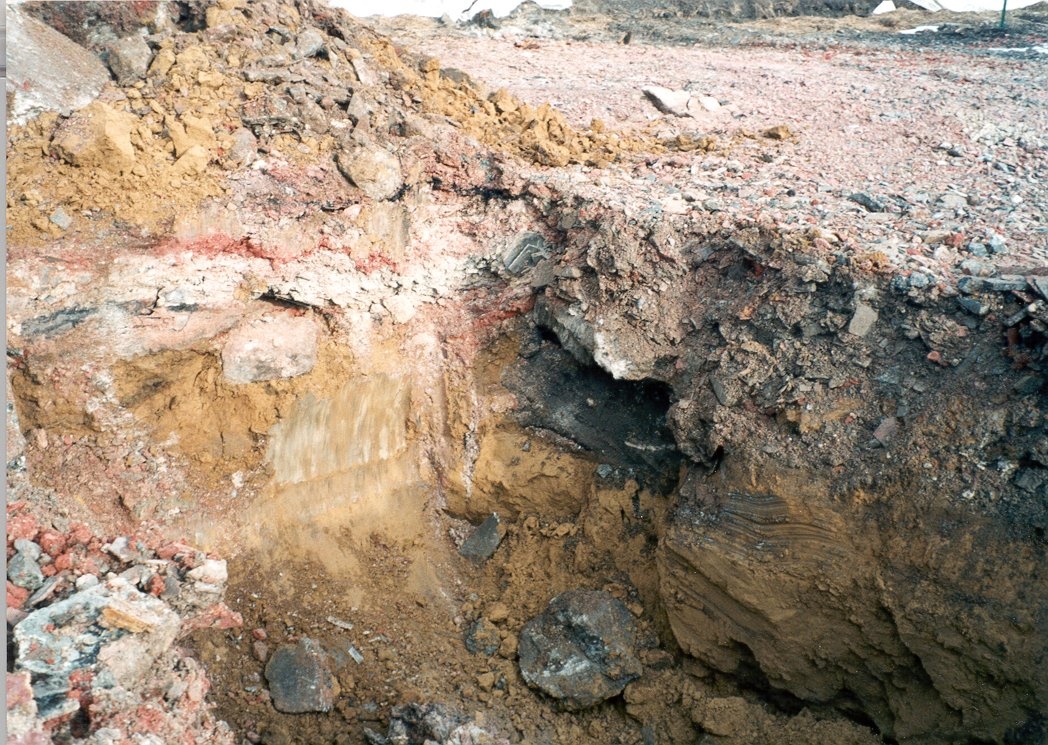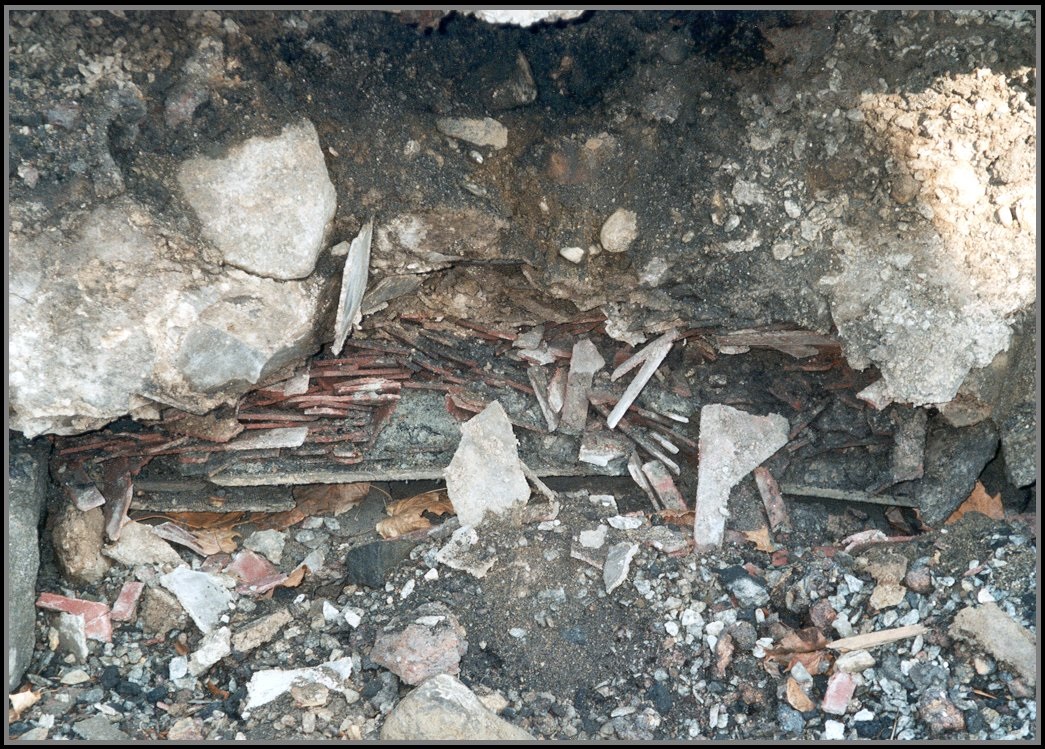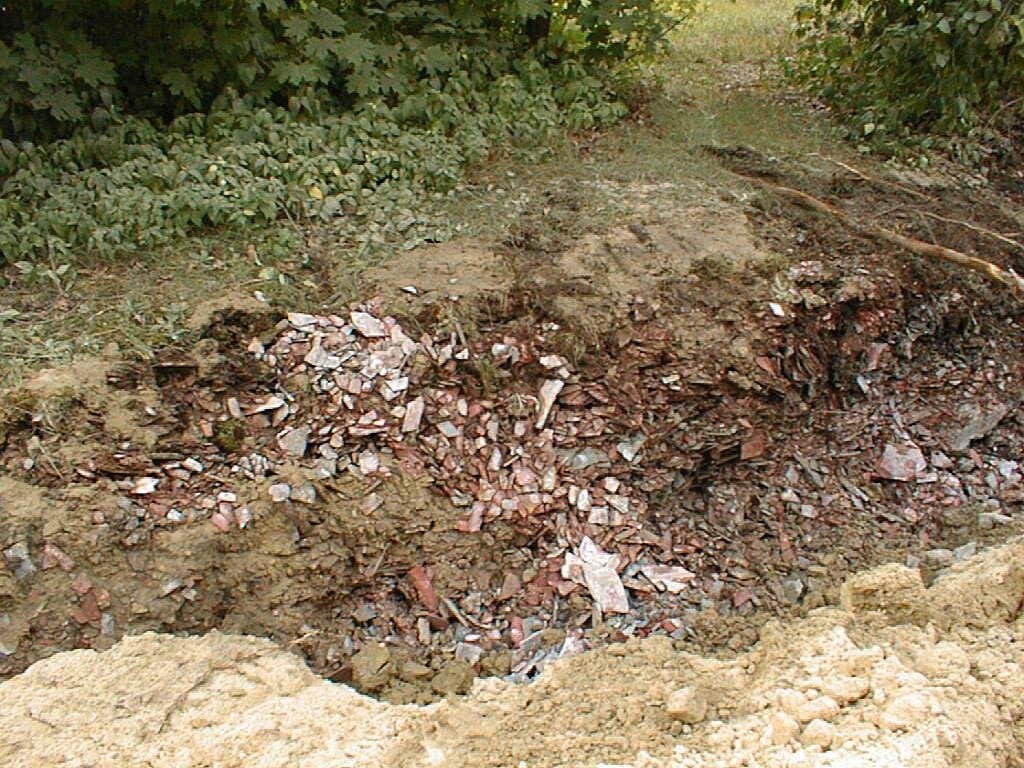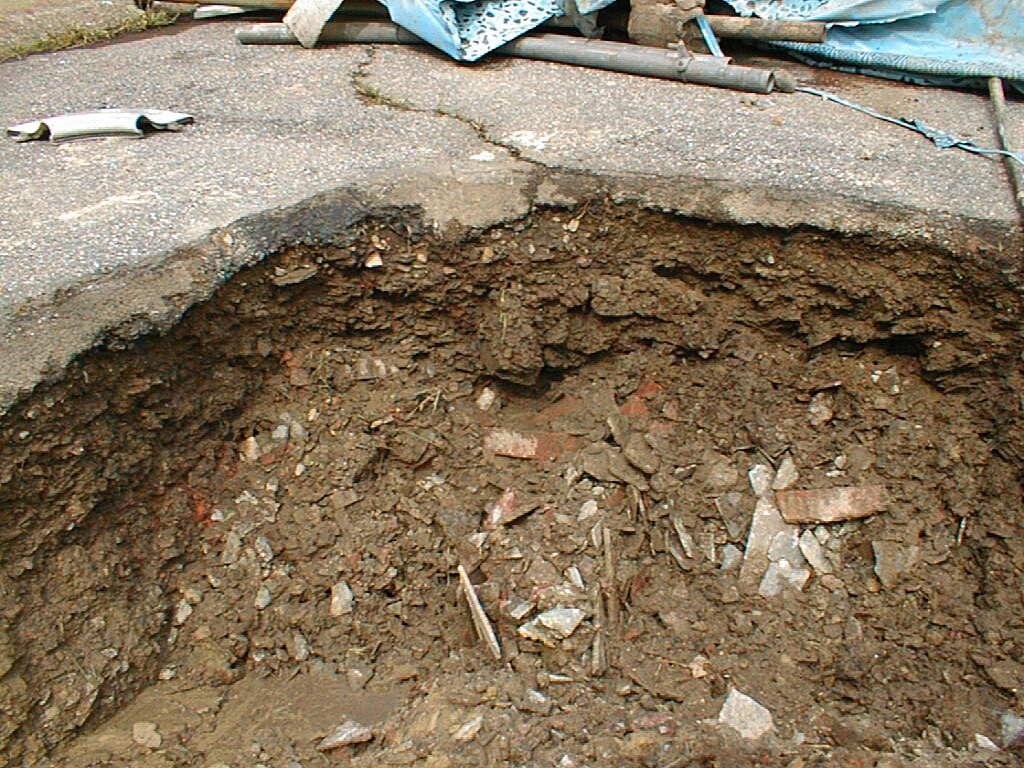Inactive Asbestos Disposal Sites
Managing asbestos disposal sites to protect human health and the environment.
 There are over 300 known asbestos disposal sites in New Hampshire that must be managed properly in order to protect human health and the environment. Materials that contained asbestos were manufactured in local plants throughout New Hampshire for nearly 100 years, such as building, textile and paper products. Manufacturing of asbestos-containing materials ceased in the mid-1980s; however, the legacy of waste disposal practices can still be found in local communities, especially Nashua and Hudson where asbestos waste products were given away as free fill to local property owners for many decades during the 1900s. Due to the free fill waste disposal practice, asbestos waste can be found on and beneath public, residential and commercial properties throughout Nashua and Hudson. It can also be found beneath roadways and railroad beds, and along river banks.
There are over 300 known asbestos disposal sites in New Hampshire that must be managed properly in order to protect human health and the environment. Materials that contained asbestos were manufactured in local plants throughout New Hampshire for nearly 100 years, such as building, textile and paper products. Manufacturing of asbestos-containing materials ceased in the mid-1980s; however, the legacy of waste disposal practices can still be found in local communities, especially Nashua and Hudson where asbestos waste products were given away as free fill to local property owners for many decades during the 1900s. Due to the free fill waste disposal practice, asbestos waste can be found on and beneath public, residential and commercial properties throughout Nashua and Hudson. It can also be found beneath roadways and railroad beds, and along river banks.
Asbestos waste disposed of prior to July 10, 1981, is managed under the NH Code of Administrative Rules Env-Sw 2100, adopted pursuant to RSA 141-E. The use of asbestos waste as fill in Nashua and Hudson stopped prior to 1981. Therefore, those sites are covered by Env-Sw 2100. Asbestos waste disposed of on or after July 10, 1981, is managed under Env-Sw 100-2000, adopted pursuant to RSA 149-M. This applies to, for example, commercial landfills that are currently permitted to receive asbestos waste.
Owners of the sites that are subject to Env-Sw 2100 must assure that there is no release of asbestos from the site. The rules require owners to:
- Provide and maintain adequate cover over all asbestos waste or remove all asbestos waste from the site to a landfill that is permitted to receive it.
- Keep records of and disclose the presence of buried asbestos to potential buyers, tenants, workers and others who have access to and may disturb the site.
- Obtain work plan approvals from NHDES for work and other activities that will disturb the asbestos waste. This work typically requires the services of licensed and certified professionals.
- Record notice of the presence of buried asbestos within the chain of title to the property at the county registry of deeds.
- Restrict site activities that will disturb asbestos without NHDES approval.
Any person involved with any activity that disturbs asbestos must comply with Env-Sw 2100, to prevent the release of asbestos fibers to either air or surface water.
Known Disposal Sites
NHDES maintains a list of asbestos disposal sites on its OneStop Data and Information System website. The OneStop database can be used to query by city and street address to see if a certain site is on this list. The OneStop database provides some information about asbestos disposal sites in New Hampshire, but it does not provide all information needed to identify and evaluate sites. Additional information may be available for review at NHDES by making a file review appointment with the NHDES Public Information Center ((603) 271-2919; filereview@des.nh.gov). The local health officer is another good source of information regarding buried asbestos waste.
Asbestos cannot be positively identified without microscopic analysis by a qualified laboratory technician. However, the trained naked eye can spot materials on the surface of, or in soil that have a high probability of being asbestos. The waste comes in a variety of colors, including gray, white, black, green, and red. After being in the soil for many years, it has a tendency to blend with its surroundings and may be hard to distinguish from the natural soils. This is particularly true of "baghouse" waste, which is a fine, dust like material. Descriptions and photos of common types of asbestos at disposal sites can be found in the guidance document: Site Identification Photos.
Also, studying the physical characteristics of a site, including the vegetation and terrain can be helpful. Based on experience, sites with the following features may contain buried asbestos waste:
- Topographic features indicating that the site has been filled.
- Debris, typically in the form of pellets, spheres and/or plate waste, located on or near the surface of the ground, or protruding from steep banks or extending into surface waters and wetlands.
- Scant vegetation and/or vegetation consisting of moss, sumac trees, poison ivy, and/or pricker bushes.
- Hummocks along a forest floor, often in a grid like or symmetrical pattern.
- Refuse/solid waste items, such as glass bottles, cans and other household items.
Resources
Rules and Regulations

Asbestos disposal workers must be certified or licensed
All contractors, workers, and consultants doing asbestos disposal site work must be trained, and certified and/or licensed in accordance with Env-A 1800 and Env-Sw 2100. The certifications and licenses are managed by the NHDES Air Resources Division.

Guidance for Managing Asbestos Disposal Sites
This document provides information needed by property owners to properly manage sites where asbestos manufacturing waste is known or suspected to be buried. Note that this document was published in May 2000, and has not been updated to reflect the adoption of rules in 2018 for the management and control of inactive asbestos disposal sites that stopped receiving waste by July 10, 1981, as provided in Env-Sw 2100. Nonetheless, this document contains much useful information for site owners and others.
Guidance for Managing Asbestos Disposal Sites (with errata sheet)

Rules and Regulations highlight owner responsibilities
Owners of asbestos disposal sites must get work plan approvals from and notify NHDES for work and other activities that will disturb the asbestos waste. This work typically requires the services of licensed and certified professionals. This Excavating Sites – Summary of Requirements document charts the requirements. Owners must also record notice of the presence of buried asbestos within the chain of title to the property at the county registry of deeds using a Chain of Title Notice (sample).




